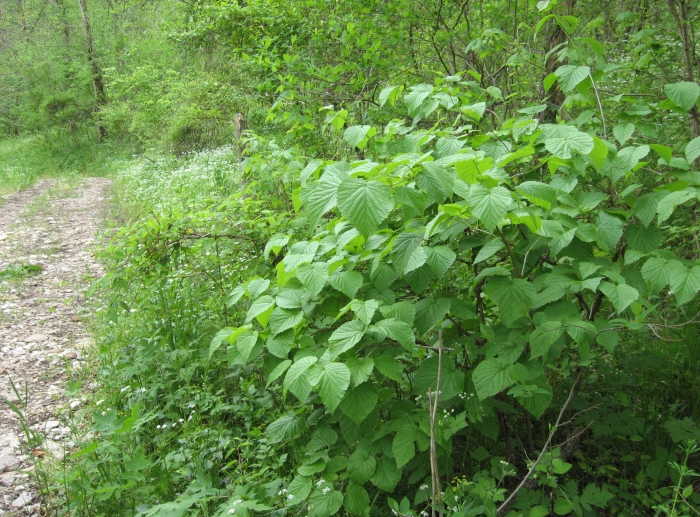Softleaf Arrowwood
(Viburnum molle)
Softleaf Arrowwood (Viburnum molle)
/
/

Mason Brock (Masebrock)
Public domain
Image By:
Mason Brock (Masebrock)
Recorded By:
Copyright:
Public domain
Copyright Notice:
Photo by: Mason Brock (Masebrock) | License Type: Public domain | License URL: https://creativecommons.org/public-domain/ | Uploader: Masebrock | Publisher: Wikimedia Commons | Title: Viburnum_molle.jpg | Notes: |





Estimated Native Range
Summary
Viburnum molle, commonly known as Softleaf Arrowwood, is a deciduous shrub native to the understory of woodlands, forest edges, and along streams in the central and southeastern United States. It typically grows to a height of 6-10 feet (1.8-3 meters) and spreads 5-9 feet (1.5-2.7 meters) wide. Softleaf Arrowwood has a rounded form with arching branches and is noted for its clusters of creamy white flowers that bloom in late spring, which are moderately showy and attract pollinators. The plant also features dark green, soft leaves and distinctive, exfoliating, papery bark that peels off in sheets, adding textural interest to the garden.
Softleaf Arrowwood is valued for its adaptability to a range of soil conditions and its tolerance of both full sun and part shade. It requires low to medium amounts of water and prefers soils with medium to fast drainage. This shrub is often used in naturalized plantings, as a border or screen, and for erosion control on slopes due to its spreading habit. It is also appreciated for its wildlife value, as the berries provide food for birds. While generally low-maintenance, it can be susceptible to viburnum leaf beetle and fungal diseases. Pruning is recommended to maintain its shape and promote vigorous growth.CC BY-SA 4.0
Softleaf Arrowwood is valued for its adaptability to a range of soil conditions and its tolerance of both full sun and part shade. It requires low to medium amounts of water and prefers soils with medium to fast drainage. This shrub is often used in naturalized plantings, as a border or screen, and for erosion control on slopes due to its spreading habit. It is also appreciated for its wildlife value, as the berries provide food for birds. While generally low-maintenance, it can be susceptible to viburnum leaf beetle and fungal diseases. Pruning is recommended to maintain its shape and promote vigorous growth.CC BY-SA 4.0
Plant Description
- Plant Type: Shrub
- Height: 8-10 feet
- Width: 8-10 feet
- Growth Rate: Moderate
- Flower Color: White
- Flowering Season: Spring, Summer
- Leaf Retention: Deciduous
Growth Requirements
- Sun: Full Sun, Part Shade
- Water: Medium
- Drainage: Medium, Fast
Common Uses
Bee Garden, Bird Garden, Butterfly Garden, Deer Resistant, Hummingbird Garden, Low Maintenance, Rabbit Resistant
Natural Habitat
Native to the understory of woodlands, forest edges, and along streams in the central and southeastern United States
Other Names
Common Names: Soft-Leaf Arrow-Wood, Soft-Leaf Arrowwood
Scientific Names: , Viburnum molle, Viburnum ozarkense, Viburnum canadense, Viburnum molle f. leiophyllum, Opulus mollis, Viburnum mexicanum, Viburnum molle var. tomentosum, Viburnum pubescens var. molle,
GBIF Accepted Name: Viburnum molle Michx.